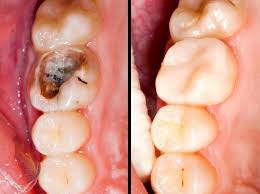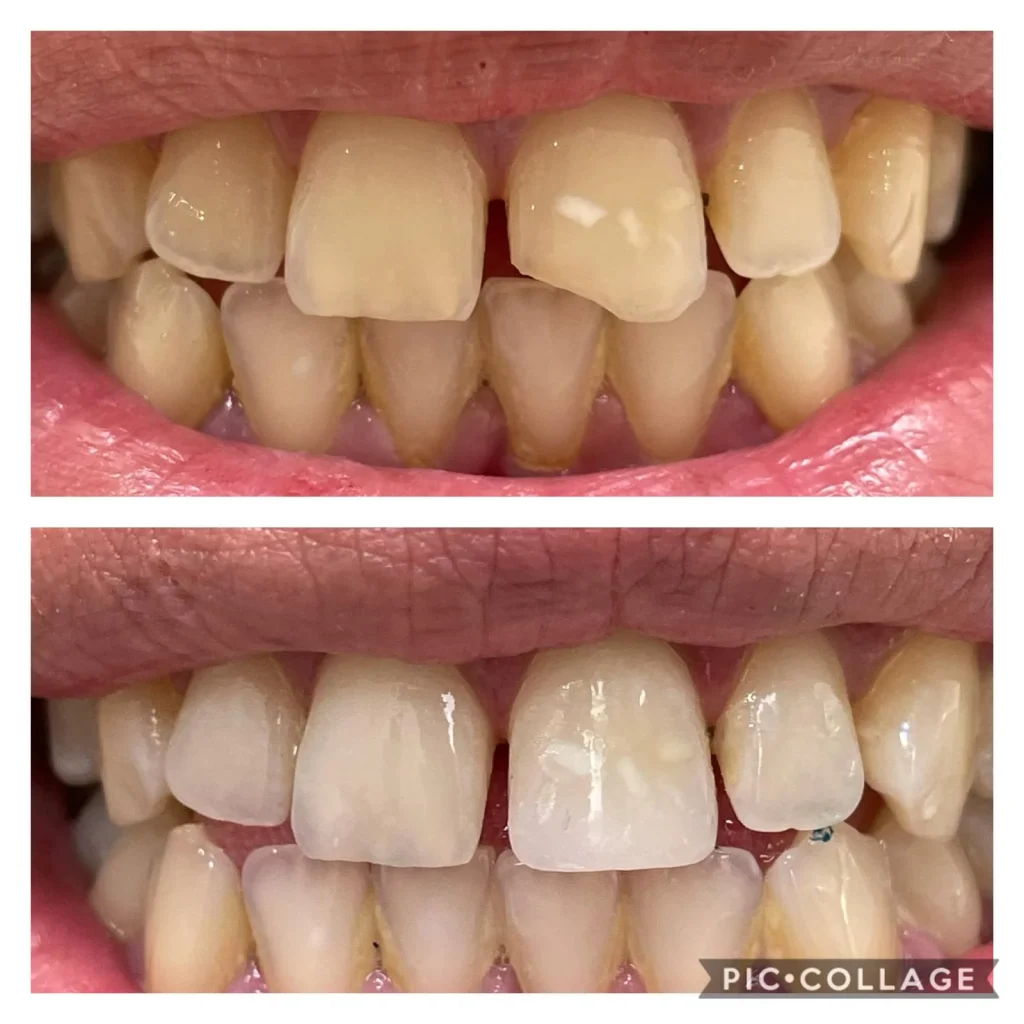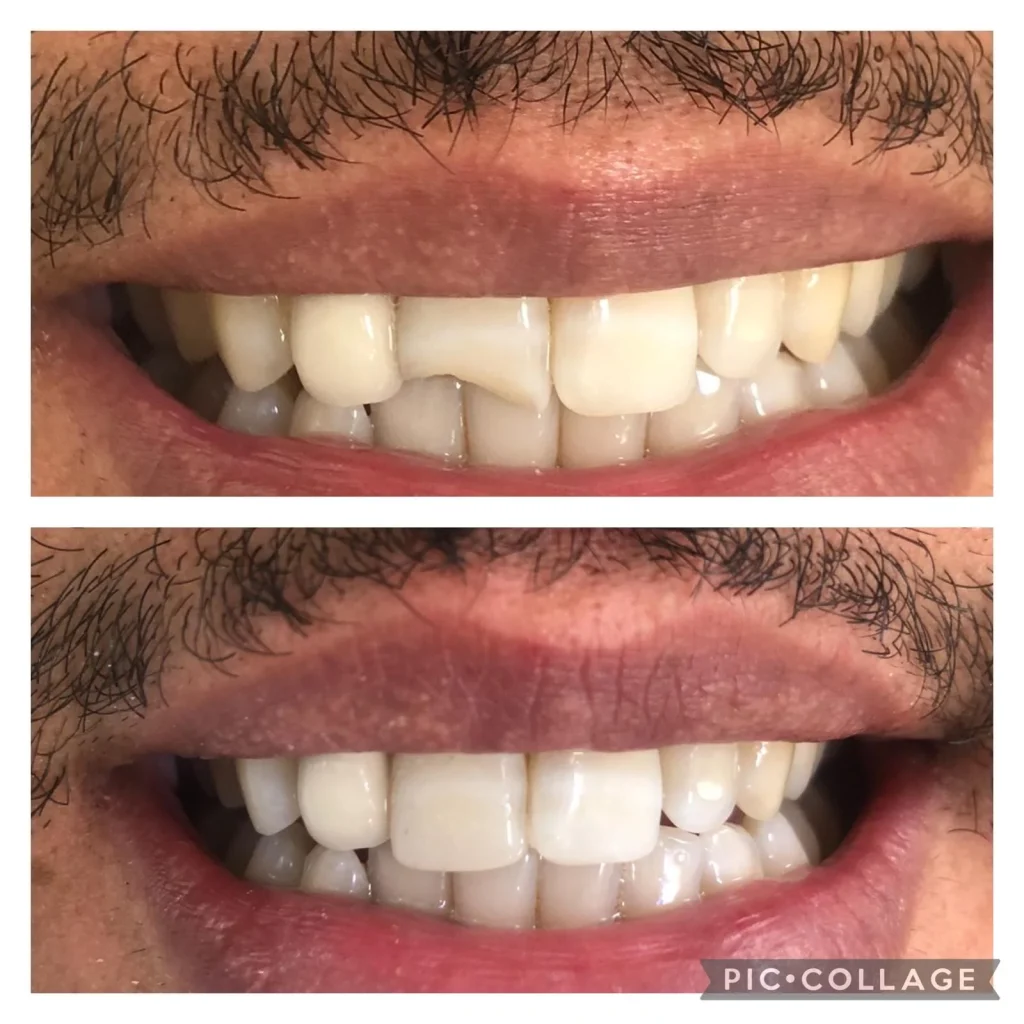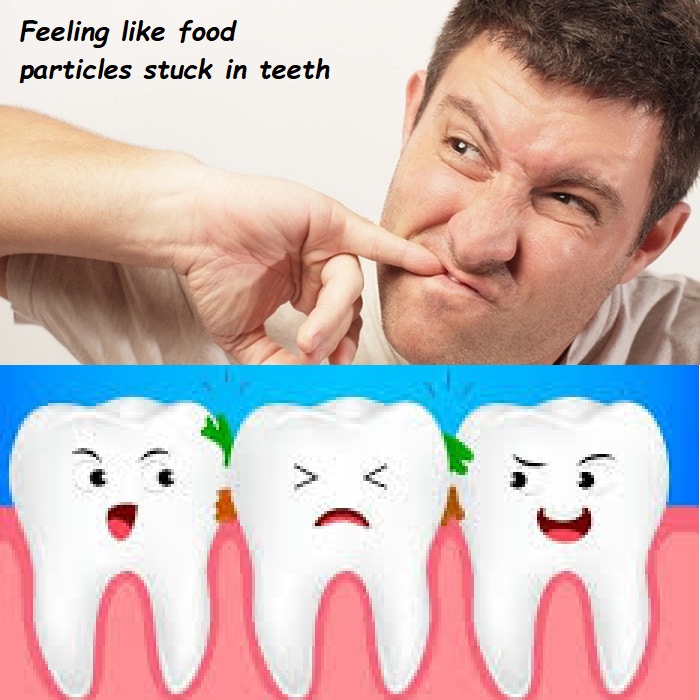How to fix pointy teeth

Having pointy teeth, particularly sharp canines, can be a source of self-consciousness for many people. While pointy teeth are a natural variation in tooth shape, they can sometimes cause concerns related to aesthetics, functionality, or even comfort. If you’re looking to correct the appearance of your pointy teeth, you have several options available, ranging from simple cosmetic procedures to more extensive dental work. In this comprehensive guide, we’ll explore the causes of pointy teeth, the various methods for fixing them, and what you can expect during the treatment process.
Understanding Pointy Teeth: What Causes Them?
Before diving into the solutions for pointy teeth, it’s important to understand why some teeth are naturally more pointed than others. Pointy teeth most commonly refer to the canines, also known as cuspids or “fangs,” which are the pointed teeth located between your incisors and premolars.
Why Are Canines Pointy?
Canines are naturally more pointed than other teeth because they serve a specific function in the mouth. Their sharp tips are designed to help tear food, especially meat, which is why they are more pronounced in carnivorous animals. In humans, canines are less pronounced than in animals, but they still retain a pointed shape to assist with biting and tearing food.
Natural Variation
The degree of pointiness in canines can vary greatly from person to person. Some people have very subtle, rounded canines, while others have more pronounced, sharp ones. In some cases, the pointiness can extend to other teeth, such as incisors, creating a more dramatic look.
Genetics
Your genetics play a significant role in determining the shape and size of your teeth, including how pointy your canines are. If you have pointy teeth, it’s possible that other members of your family have similar dental traits.
Wear and Tear
Over time, teeth can become more pointed due to natural wear and tear, particularly if you grind your teeth or have an uneven bite. This can cause certain teeth to wear down more quickly, leading to a sharper appearance.
Why Might You Want to Fix Pointy Teeth?
While pointy teeth are perfectly normal and functional, there are several reasons why someone might want to modify their appearance:
- Aesthetic Concerns: Some people feel self-conscious about having pointy teeth, particularly if they believe the shape makes their smile look overly aggressive or vampire-like. Correcting the shape of the teeth can create a softer, more uniform appearance.
- Functional Issues: In some cases, very sharp or misaligned pointy teeth can cause issues with biting, chewing, or even speaking. Adjusting the shape of the teeth can improve functionality.
- Comfort: If pointy teeth are causing discomfort, such as when they poke into the inside of the lips or cheeks, reshaping them can alleviate these issues.
- Orthodontic Reasons: Sometimes, pointy teeth can contribute to bite problems or misalignment. In such cases, modifying the teeth may be part of a larger orthodontic treatment plan.
How to Fix Pointy Teeth: Treatment Options
If you’re considering fixing your pointy teeth, there are several treatment options available. The best choice for you will depend on the extent of the pointiness, your desired outcome, and your overall dental health. Here are the most common methods for correcting pointy teeth:
1. Tooth Contouring (Enameloplasty)
Tooth contouring, also known as enameloplasty, is a cosmetic procedure that involves reshaping the enamel (the outer layer of the tooth) to achieve a more rounded and natural appearance. This is one of the simplest and least invasive methods for correcting pointy teeth.
Procedure:
- Consultation: During your initial consultation, your dentist will evaluate the shape of your teeth and discuss your desired outcome. They may take X-rays to ensure that there is enough enamel to safely reshape the tooth.
- Reshaping: The dentist will use a dental drill or laser to gently file down the pointy areas of the tooth. The process is usually quick and painless, as it only involves removing a small amount of enamel.
- Smoothing and Polishing: After the tooth is reshaped, the dentist will smooth and polish the surface to ensure it blends seamlessly with the surrounding teeth.
Advantages:
- Minimally Invasive: Tooth contouring is a quick and simple procedure that doesn’t require anesthesia.
- Immediate Results: You can see the results of tooth contouring immediately after the procedure.
- Cost-Effective: Contouring is generally less expensive than other cosmetic dental treatments.
Disadvantages:
- Limited to Minor Adjustments: Tooth contouring is best suited for minor changes. If your teeth are significantly pointy, other treatments may be more appropriate.
- Irreversible: Since enamel is permanently removed, the procedure cannot be reversed.
2. Dental Bonding
Dental bonding is another popular option for fixing pointy teeth. This procedure involves applying a tooth-colored composite resin to the teeth to reshape them and create a more balanced appearance.
Procedure:
- Consultation: Your dentist will discuss your goals and choose a composite resin that matches the color of your natural teeth.
- Preparation: The surface of the tooth may be roughened slightly to help the bonding material adhere better. A conditioning liquid is applied to the tooth as well.
- Application: The dentist applies the composite resin to the tooth and sculpts it into the desired shape, covering the pointy areas and rounding them out.
- Curing: Once the resin is shaped, it is hardened using a special curing light. The dentist then polishes the bonded tooth to give it a smooth finish.
Advantages:
- Versatile: Bonding can be used to reshape teeth, close gaps, and even improve the color of the teeth.
- Minimally Invasive: The procedure typically doesn’t require anesthesia and involves minimal alteration to the natural tooth structure.
- Cost-Effective: Dental bonding is more affordable than veneers or crowns.
Disadvantages:
- Durability: Bonding material is less durable than porcelain, meaning it can chip or wear down over time. It may need to be touched up or replaced every few years.
- Staining: Composite resin can stain over time, especially if you consume staining substances like coffee, tea, or red wine.
3. Porcelain Veneers
Porcelain veneers are thin, custom-made shells that are bonded to the front surface of the teeth to improve their shape, size, and color. Veneers are an excellent option if you’re looking for a more permanent and dramatic transformation.
Procedure:
- Consultation: Your dentist will evaluate your teeth and discuss whether veneers are the right option for you. They may take impressions of your teeth to create custom veneers.
- Tooth Preparation: A small amount of enamel (usually less than a millimeter) is removed from the front of the tooth to make room for the veneer. This step may require local anesthesia.
- Impressions: Impressions of your teeth are taken and sent to a dental lab, where your veneers are custom-made.
- Temporary Veneers: While you wait for your permanent veneers, temporary veneers may be placed to protect your teeth.
- Bonding: During your final appointment, the temporary veneers are removed, and the permanent veneers are bonded to your teeth using dental cement. The dentist will make any necessary adjustments to ensure a perfect fit.
Advantages:
- Aesthetic Excellence: Veneers offer the most natural and aesthetically pleasing results, closely resembling the appearance of real teeth.
- Durability: Porcelain veneers are strong and resistant to staining, making them a long-lasting option.
- Custom-Made: Each veneer is custom-made to match the shape, size, and color of your teeth, ensuring a perfect fit and appearance.
Disadvantages:
- Cost: Veneers are more expensive than other options like bonding or contouring.
- Irreversible: The procedure is irreversible because enamel is removed from the tooth to accommodate the veneer.
- Multiple Visits: Getting veneers typically requires multiple dental visits.
4. Dental Crowns
For teeth that are not only pointy but also significantly damaged, cracked, or decayed, a dental crown may be the best option. A crown is a cap that completely covers the tooth, restoring its shape, size, and strength.
Procedure:
- Consultation: Your dentist will examine the tooth and determine whether a crown is the best solution. X-rays may be taken to assess the health of the tooth.
- Tooth Preparation: The tooth is reshaped to create space for the crown. This may involve removing a significant amount of tooth structure, depending on the condition of the tooth.
- Impressions: Impressions of the prepared tooth are taken and sent to a dental lab, where the crown is custom-made.
- Temporary Crown: A temporary crown may be placed while you wait for the permanent crown to be fabricated.
- Permanent Crown Placement: During your final appointment, the temporary crown is removed, and the permanent crown is cemented in place. The dentist will ensure the crown fits well and matches your natural teeth.
Advantages:
- Strength and Durability: Crowns provide excellent protection and strength, making them ideal for teeth that are significantly damaged or worn.
- Aesthetic Improvement: Crowns can be made from materials like porcelain, which closely resemble natural teeth.
- Comprehensive Restoration: Crowns not only improve the appearance of pointy teeth but also restore function and protect the tooth from further damage.
Disadvantages:
- Cost: Crowns are more expensive than other cosmetic options like bonding or contouring.
- Multiple Visits: The process of getting a crown typically requires at least two dental visits.
- Tooth Preparation: The procedure involves significant reshaping of the tooth, making it irreversible.
5. Orthodontic Treatment
In some cases, pointy teeth are associated with misalignment or bite issues that can’t be corrected with simple reshaping. Orthodontic treatment, such as braces or clear aligners, may be necessary to move the teeth into a better position, which can help reduce their pointy appearance.
Procedure:
- Consultation: An orthodontist will evaluate your teeth and bite to determine whether orthodontic treatment is needed. X-rays, photos, and impressions may be taken.
- Treatment Planning: Based on the evaluation, a treatment plan will be created, which may include braces, clear aligners, or other orthodontic appliances.
- Treatment: The orthodontic treatment will gradually move the teeth into the desired position over several months to years.
- Retention: After the active phase of orthodontic treatment, you’ll likely need to wear a retainer to maintain the new position of your teeth.
Advantages:
- Comprehensive Solution: Orthodontic treatment can address underlying alignment issues that contribute to the appearance of pointy teeth.
- Long-Term Results: The results of orthodontic treatment are typically long-lasting, provided you follow the retention plan.
- Improved Function: In addition to improving the appearance of pointy teeth, orthodontic treatment can enhance your bite and overall oral health.
Disadvantages:
- Time-Consuming: Orthodontic treatment can take several months to years to achieve the desired results.
- Cost: Orthodontic treatment can be expensive, especially if it involves braces or clear aligners.
- Requires Commitment: Orthodontic treatment requires regular visits to the orthodontist and adherence to the treatment plan, which can be time-consuming.
Choosing the Right Treatment for Your Pointy Teeth
The best treatment option for your pointy teeth will depend on various factors, including the severity of the pointiness, your aesthetic goals, budget, and overall dental health. Here are some tips to help you choose the right treatment:
1. Consult with a Dentist
The first step in determining the best treatment is to consult with a dentist who specializes in cosmetic dentistry. They can evaluate your teeth, discuss your concerns, and recommend the most appropriate options based on your specific needs.
2. Consider Your Aesthetic Goals
Think about the results you want to achieve. If you’re looking for a subtle change, tooth contouring or bonding may be sufficient. If you want a more dramatic transformation, veneers or crowns might be a better choice.
3. Evaluate the Cost
Different treatments come with different costs. While bonding and contouring are generally more affordable, veneers and crowns are more expensive due to the materials and labor involved. Consider your budget and discuss payment options with your dentist.
4. Think About Longevity
Some treatments, like veneers and crowns, are more durable and long-lasting than others. If you’re looking for a solution that will stand the test of time, you may want to invest in a more permanent option.
5. Consider the Invasiveness of the Procedure
If you prefer a minimally invasive option, contouring or bonding may be the best choice. If you’re comfortable with more extensive dental work, veneers or crowns may offer the results you’re looking for.
FAQs About Fixing Pointy Teeth
1. Is fixing pointy teeth painful?
Most procedures for fixing pointy teeth, such as contouring and bonding, are minimally invasive and typically do not cause significant pain. More extensive procedures, like veneers or crowns, may require local anesthesia to ensure comfort during the procedure.
2. How long does it take to fix pointy teeth?
The time required to fix pointy teeth depends on the treatment chosen. Tooth contouring and bonding can usually be completed in a single visit, while veneers and crowns may require multiple visits over a few weeks.
3. Are there any risks associated with fixing pointy teeth?
All dental procedures carry some risks, but these are generally minimal for cosmetic treatments like contouring and bonding. The main risks include sensitivity, damage to the enamel, or the need for future touch-ups. Your dentist will discuss any potential risks before proceeding with treatment.
4. Can pointy teeth affect my bite?
In some cases, very pointy or misaligned teeth can affect your bite, leading to issues like uneven wear, jaw pain, or difficulty chewing. Correcting the shape of your teeth may improve your bite and prevent further problems.
5. Will insurance cover the cost of fixing pointy teeth?
Cosmetic dental procedures are often not covered by insurance, as they are considered elective. However, if the pointy teeth are causing functional issues, such as problems with biting or chewing, your insurance may cover part of the cost. It’s best to check with your insurance provider to understand your coverage.
Conclusion: Achieving the Smile You Desire
If you’re self-conscious about your pointy teeth or if they’re causing functional issues, there are several effective ways to correct their appearance. From simple tooth contouring to more comprehensive treatments like veneers or crowns, you can choose the option that best suits your needs and goals.
The first step is to consult with a qualified dentist who can evaluate your teeth and guide you through the process of choosing the right treatment. With the right approach, you can achieve a more balanced, aesthetically pleasing smile that enhances your confidence and overall dental health.
Remember, while pointy teeth are a natural variation, fixing them is a personal choice. Whether for cosmetic reasons or to improve functionality, there’s no right or wrong decision—just what makes you feel best about your smile.









